Affiliate links on Android Authority may earn us a commission. Learn more.
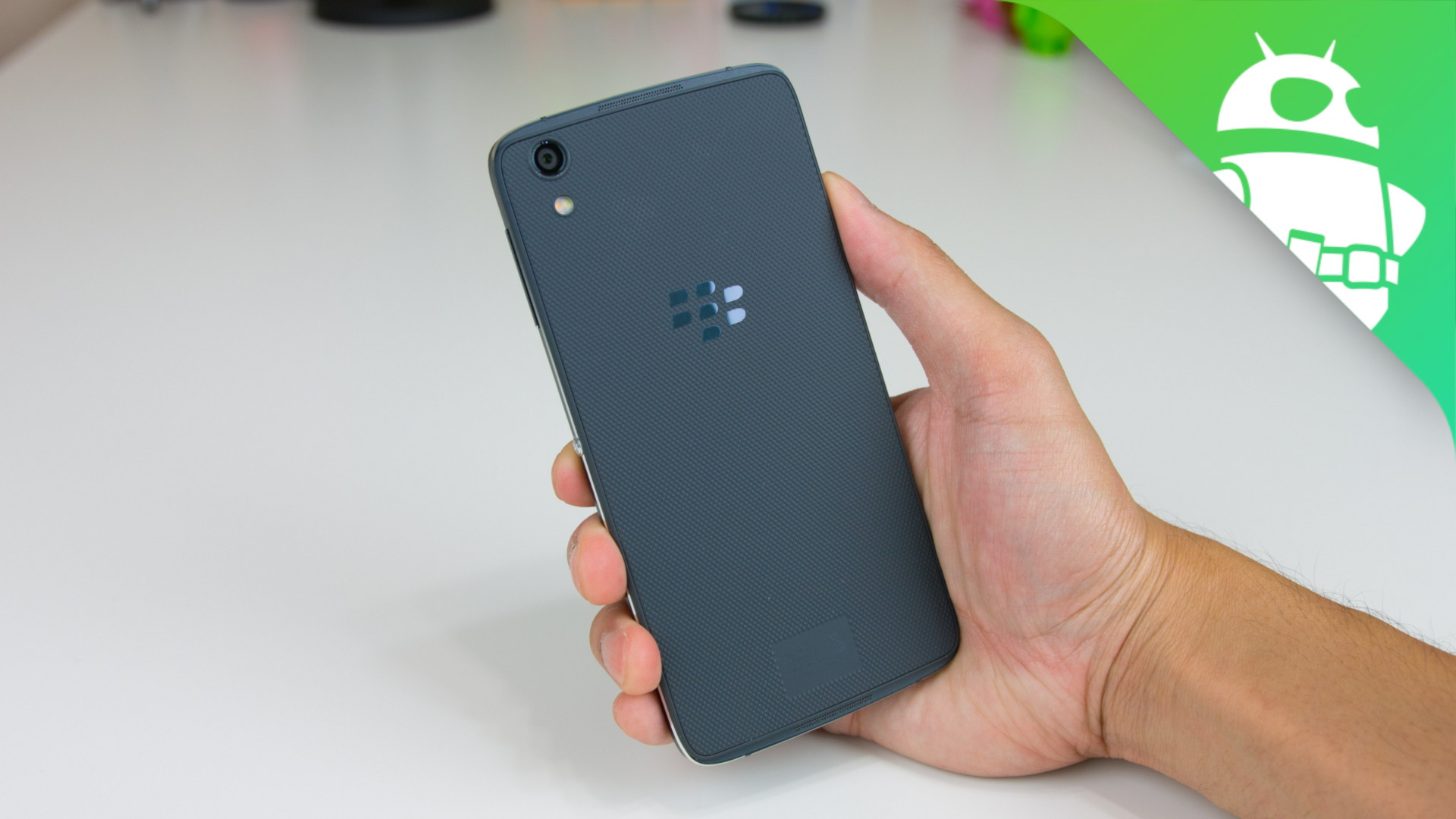
BlackBerry DTEK50 review
Published onAugust 11, 2016
BlackBerry DTEK50
What we like
What we don't like
Our scores
BlackBerry DTEK50
BlackBerry launched their first Android smartphone ever last year, and while there were a lot of people who were eagerly awaiting its launch, the Priv fell short of expectations. Granted, there were some good things going for it, but a lackluster camera and premium pricing meant that their first effort wasn’t exactly a smash hit.
Now, BlackBerry is back with their second attempt, and what BlackBerry is touting as the most secure smartphone in the world. What else does this device have to offer, and is security enough of a selling point to make this phone worth buying? We find out, in this in-depth BlackBerry DTEK50 review!
Design
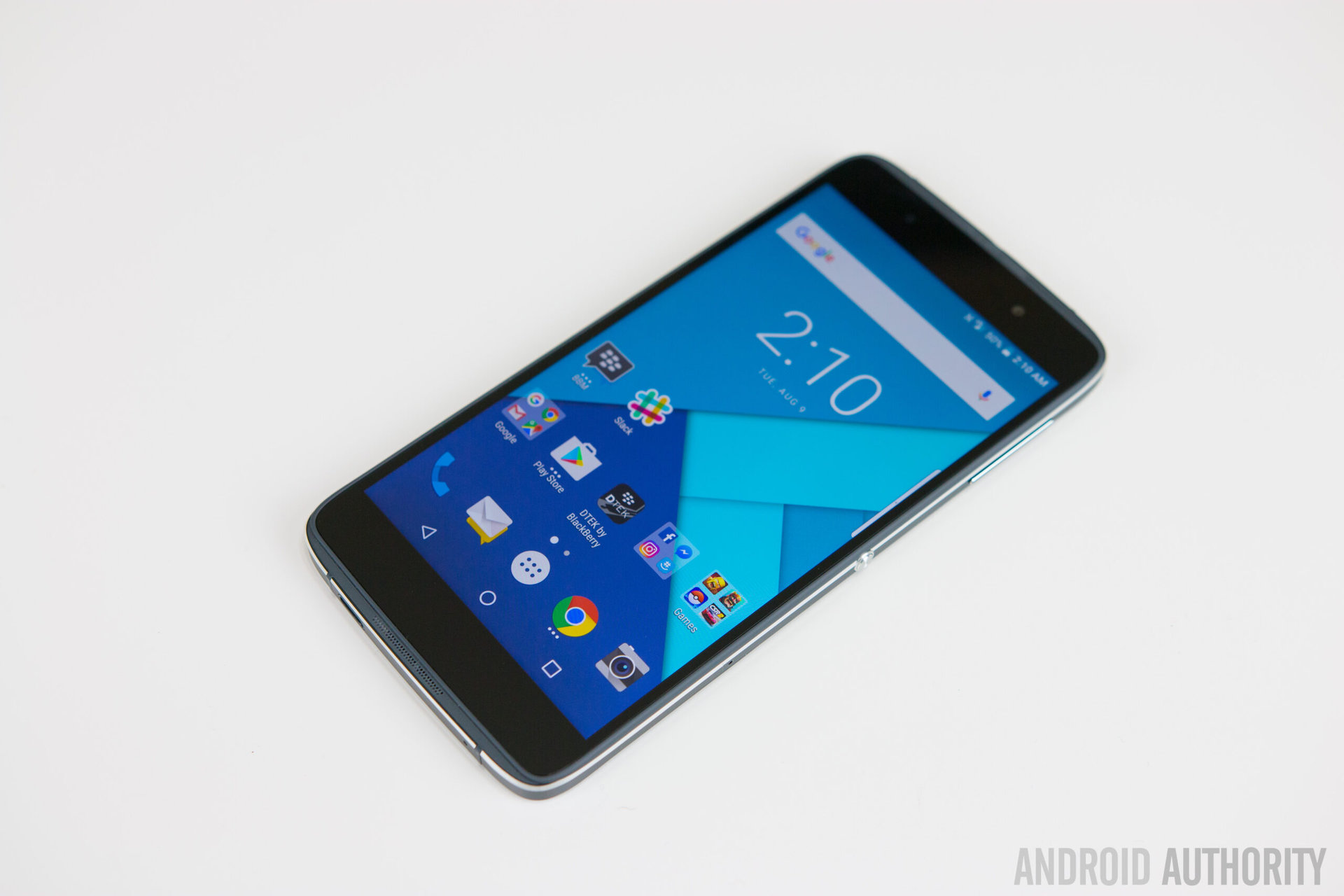
When looking at the BlackBerry DTEK50, you will find that this device appears to be eerily similar to another phone that we’ve seen before, but not to worry, your eyes aren’t playing tricks on you. The design of the DTEK50 is actually based on the same TCL reference design that Alacatel used with the Ido 4, making them pretty much identical.
Everything from the curves at the top and bottom, the rounded corners, flat sides, and the dual front-facing and rear-facing speaker setup is found with the DTEK50, and the only distinguishable design element that separates this from the Idol 4 is on the back. Instead of a glass backing that is available with the latter, the DTEK50 features a textured material with a silicone-like feel.

This difference actually works in favor of the BlackBerry smartphone, with it not attracting fingerprints, and allowing for a lot of grip. The general shape of the DTEK50 is reminiscent of the Nexus 4, especially when looking at it from the front, so I’m definitely a fan of the design. It’s simple, clean, and easy to use with one hand, thanks to the thin side bezels and small top and bottom chin.
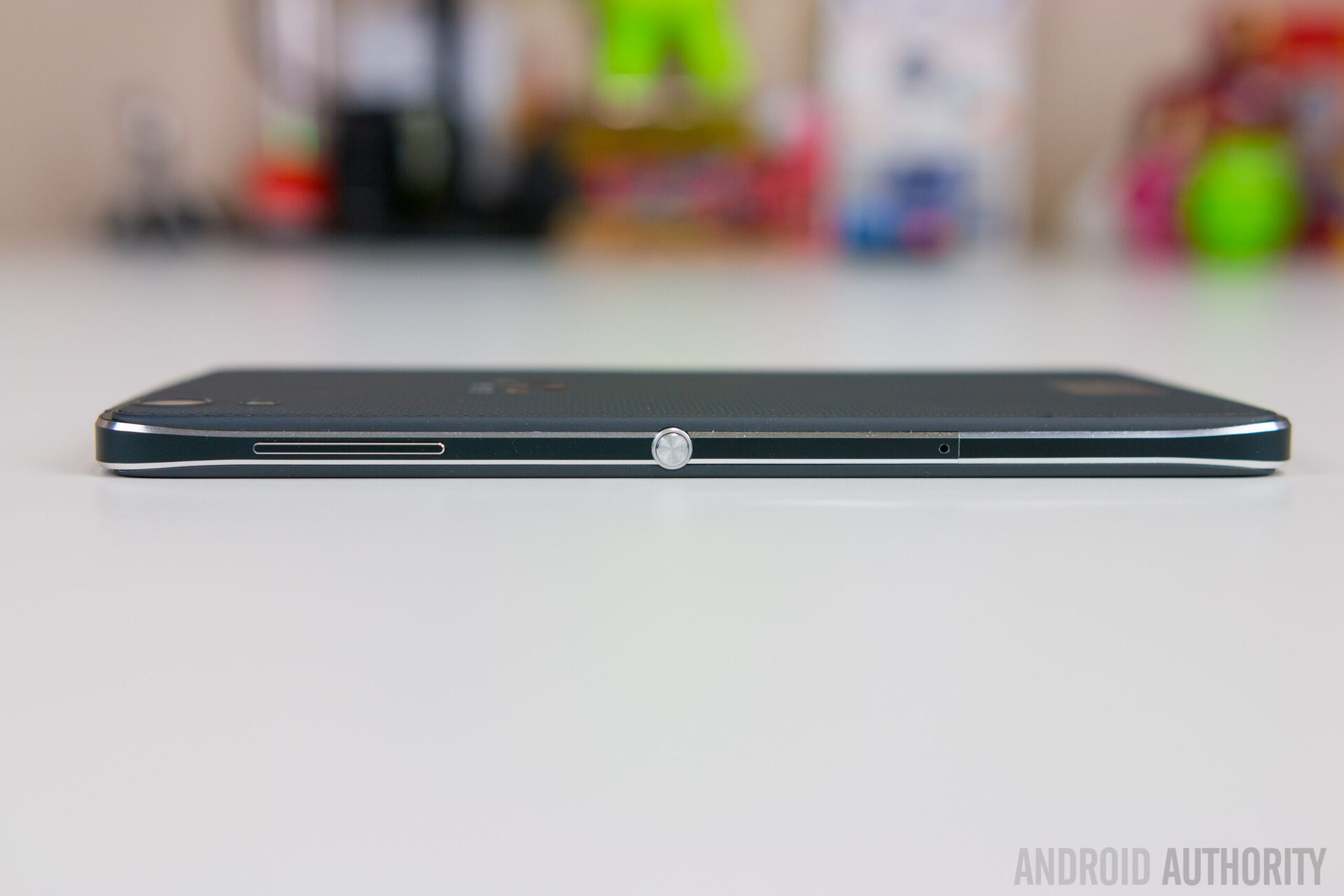
Taking a look around the device, the SIM and microSD card slot is on the right side, and the headphone jack and microUSB port are at the top and bottom respectively. The volume rocker is also on the right, and below it is a large circular button that you would expect is the power button. Instead, it is what BlackBerry is calling the “convenience key.” This is a completely programmable button that can be used for a variety of functions, like composing a text, controlling the LED flash, toggling Wi-Fi, or opening any app.
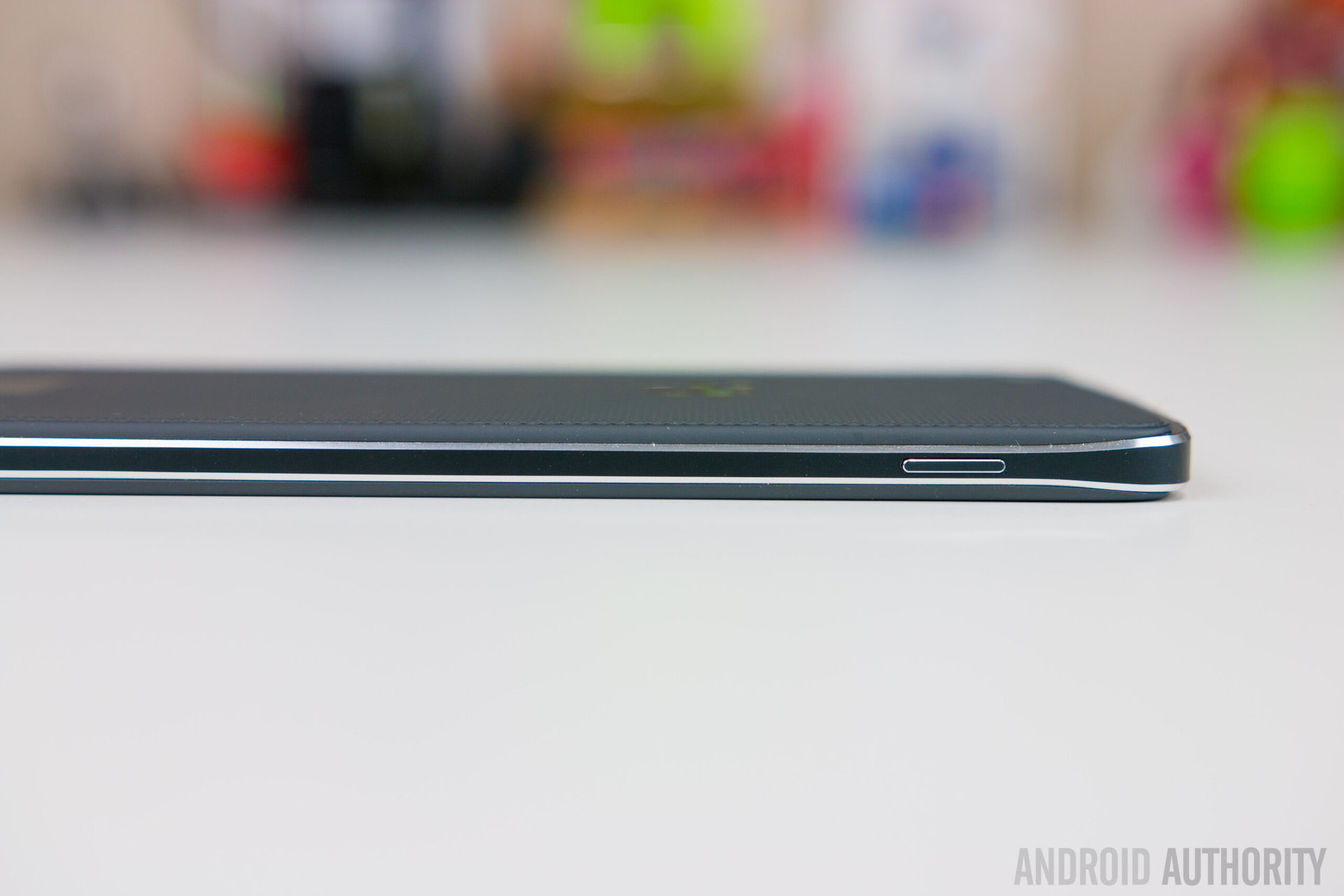
The power button is located on the upper left side of the phone, and that is actually my biggest gripe with the design of the DTEK50. Unless you use the phone with your left hand, it can be quite awkward and difficult to reach the power button, and will certainly take some getting used to. Thankfully, the phone does come with a double tap to wake and sleep feature, and even though it may not work as well, and can be quite slow at times, it’s still better than having to reach for the power button all the time. The convenience key can be used to lock the device, but unfortunately cannot wake it.
Display
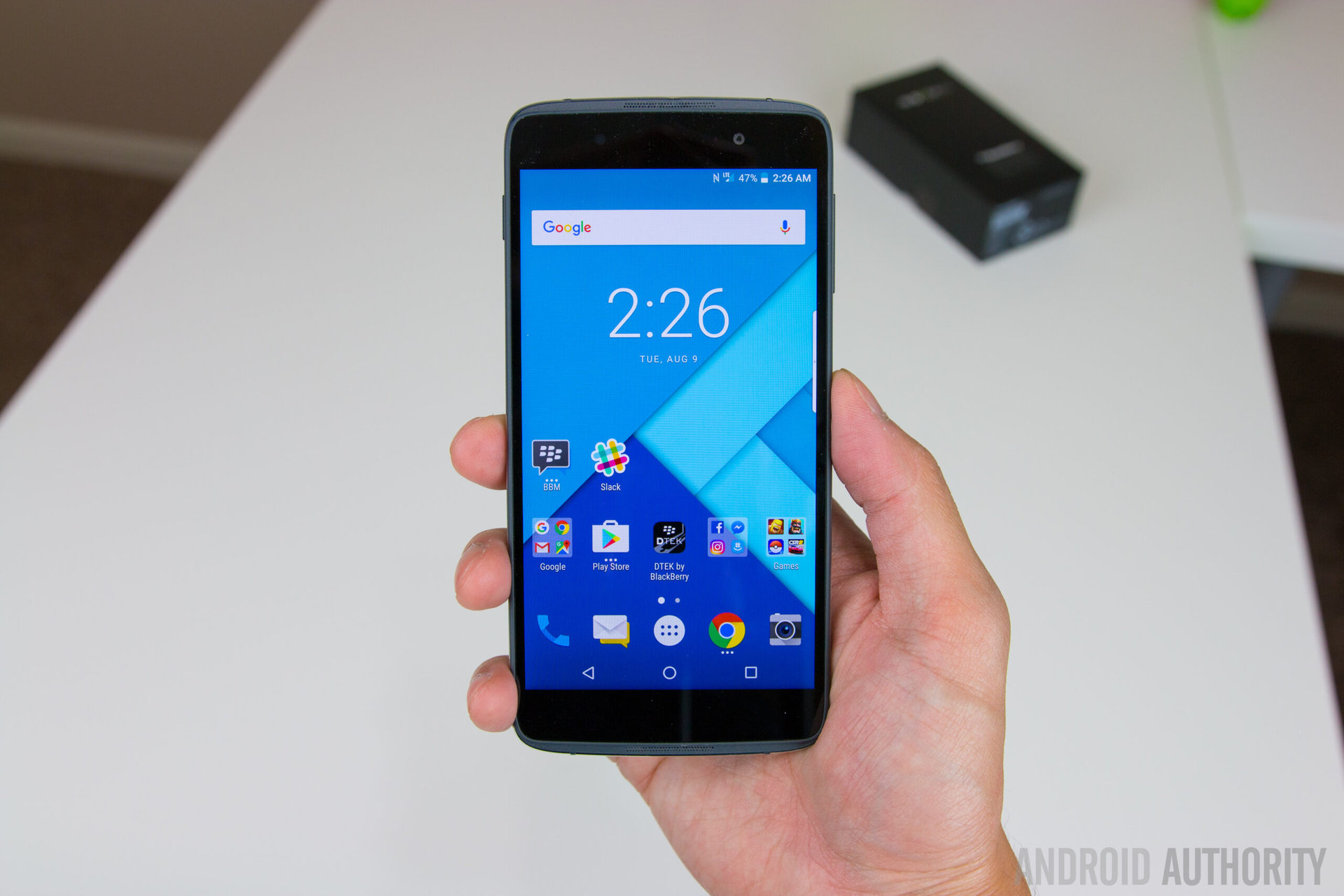
The BlackBerry DTEK50 comes with a 5.2-inch IPS LCD display, with a Full HD resolution, resulting in a pixel density of 424 ppi. It’s not a display that is going to amaze, but you certainly won’t have any complaints either. It gets bright enough to see outdoors, has decent viewing angles, and offers a good amount of color and contrast, without being oversaturated. 1080p is more than enough at this display size, and reading text, watching videos, and playing games are all enjoyable on this screen.
Performance
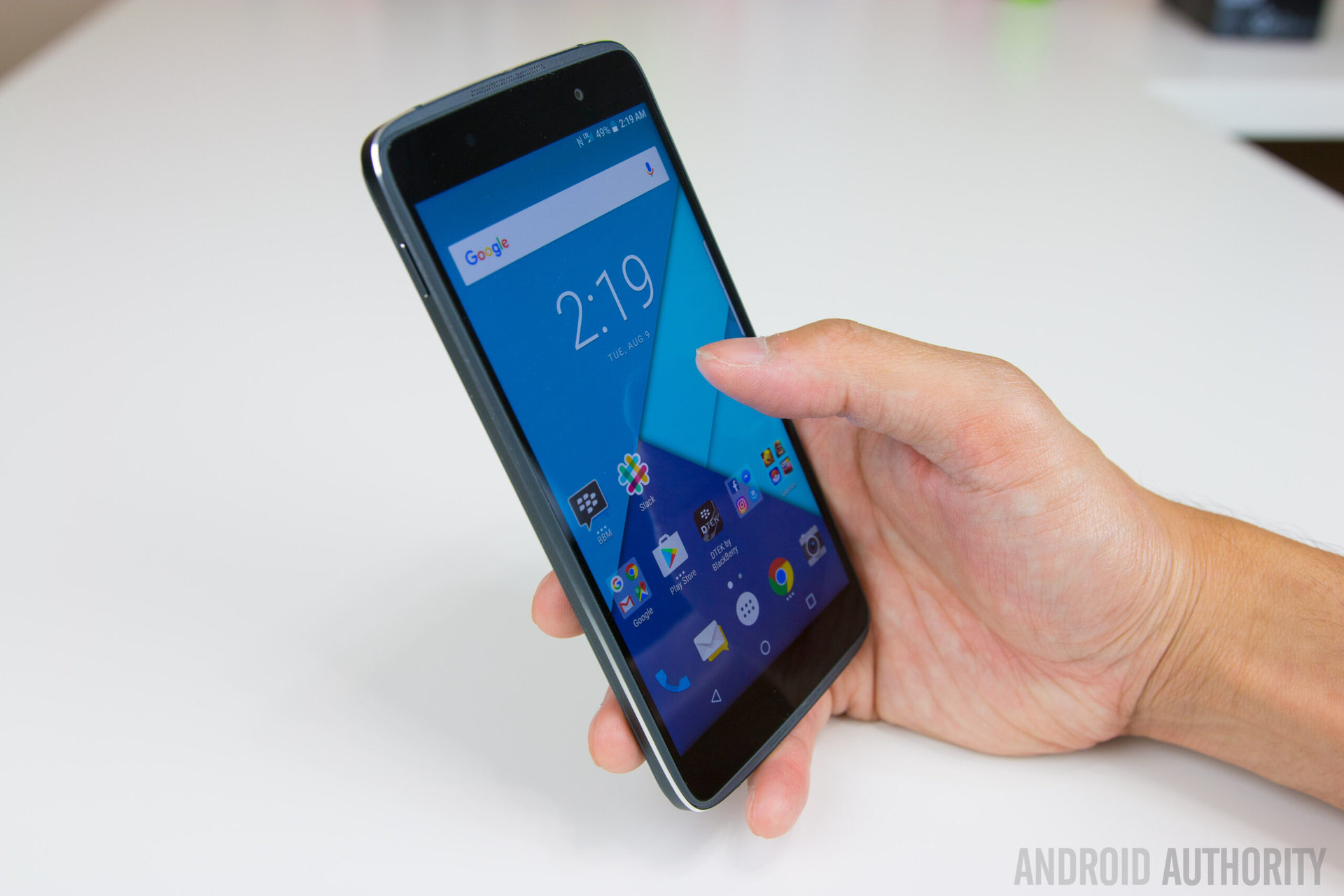
Under the hood, the DTEK50 comes with an octa-core Qualcomm Snapdragon 617 processor, clocked at 1.5 GHz, and backed by the Adreno 405 GPU and 3 GB of RAM. This processing package is pretty standard fare when it comes to mid-range smartphones in 2016, but the performance is a little bit of a mixed bag. With normal, everyday use, the smartphone works perfectly well.
The touch responsiveness is good, and opening, closing, and switching between apps doesn’t result in any problems, even if there is an occasional stutter here and there. While gaming, however, is where you will notice a lot of hiccups. Games are very playable for the most part, but load times can be pretty long, and there tends to be a lot of choppiness and lag when playing a game as basic as Pokemon Go.
This issue is even more pronounced if there are a lot of graphical elements on the screen at the same time. Games like CSR Racing 2 have to render graphics at a much lower resolution, and also limit some in-game functionality in order to run smoothly, which is a little disappointing. If you’re big into mobile gaming, the DTEK50 won’t make the cut, but for everything else, this phone will certainly get the job done.
Hardware
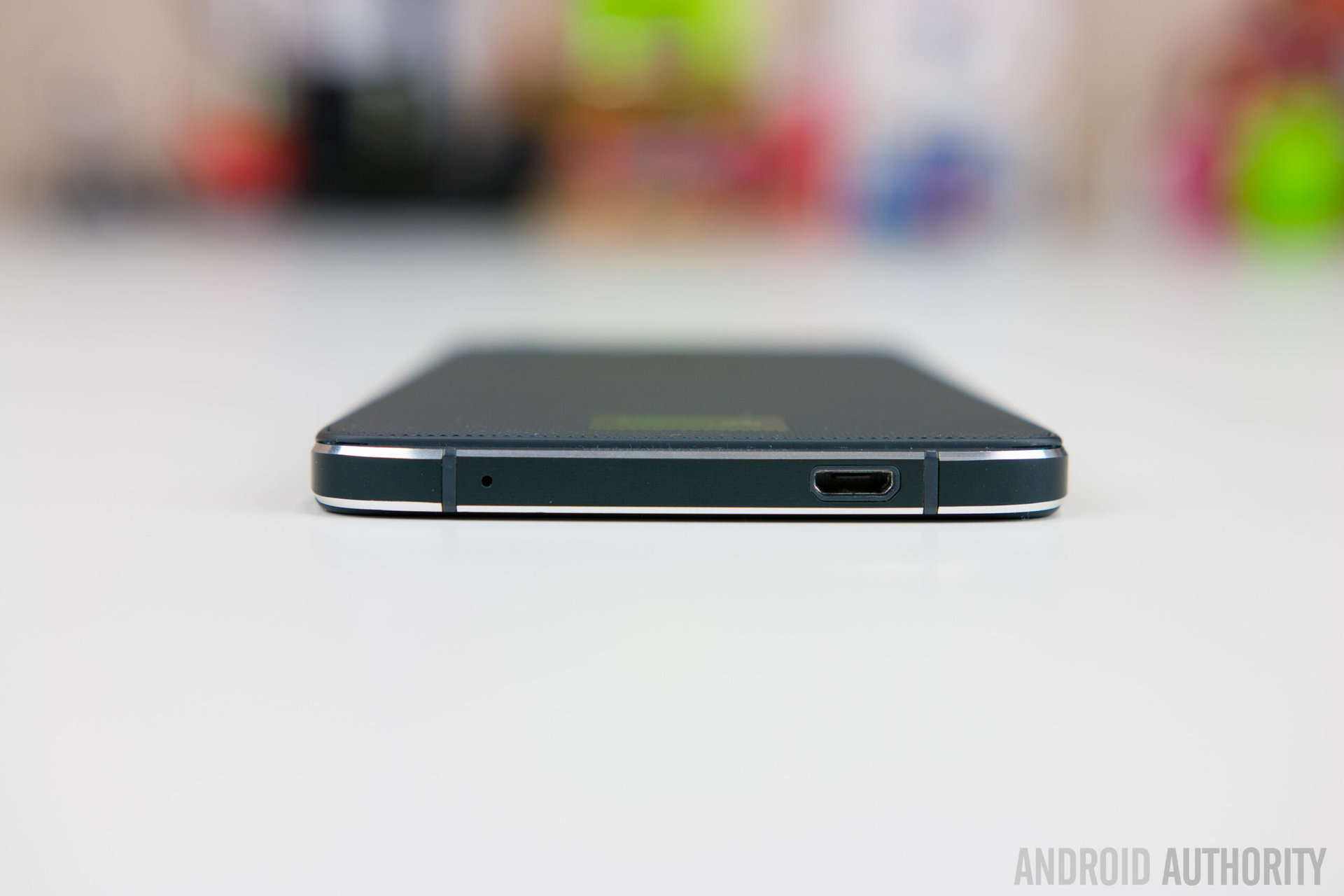
You only get 16 GB of on-board storage with the DTEK50, but the device does offer expandable storage via microSD card up to 256 GB, so if you are looking to download a lot of apps and games, you will definitely need to pick up a microSD card.
One of the best aspects of the DTEK50, as is also the case with the Idol 4, is the speaker setup of the device. You get dual front-facing speakers as well as dual rear-facing speakers, and the sound quality is pretty good. They get plenty loud, and the audio doesn’t sound tinny, or become distorted at the highest volumes. Since the speakers are also mirrored on the back, and you can put the phone face up or down without any deterioration in sound quality. The only issue with these speakers is that because of the tiny machined holes, they are very prone to getting dirty and trapping dust.
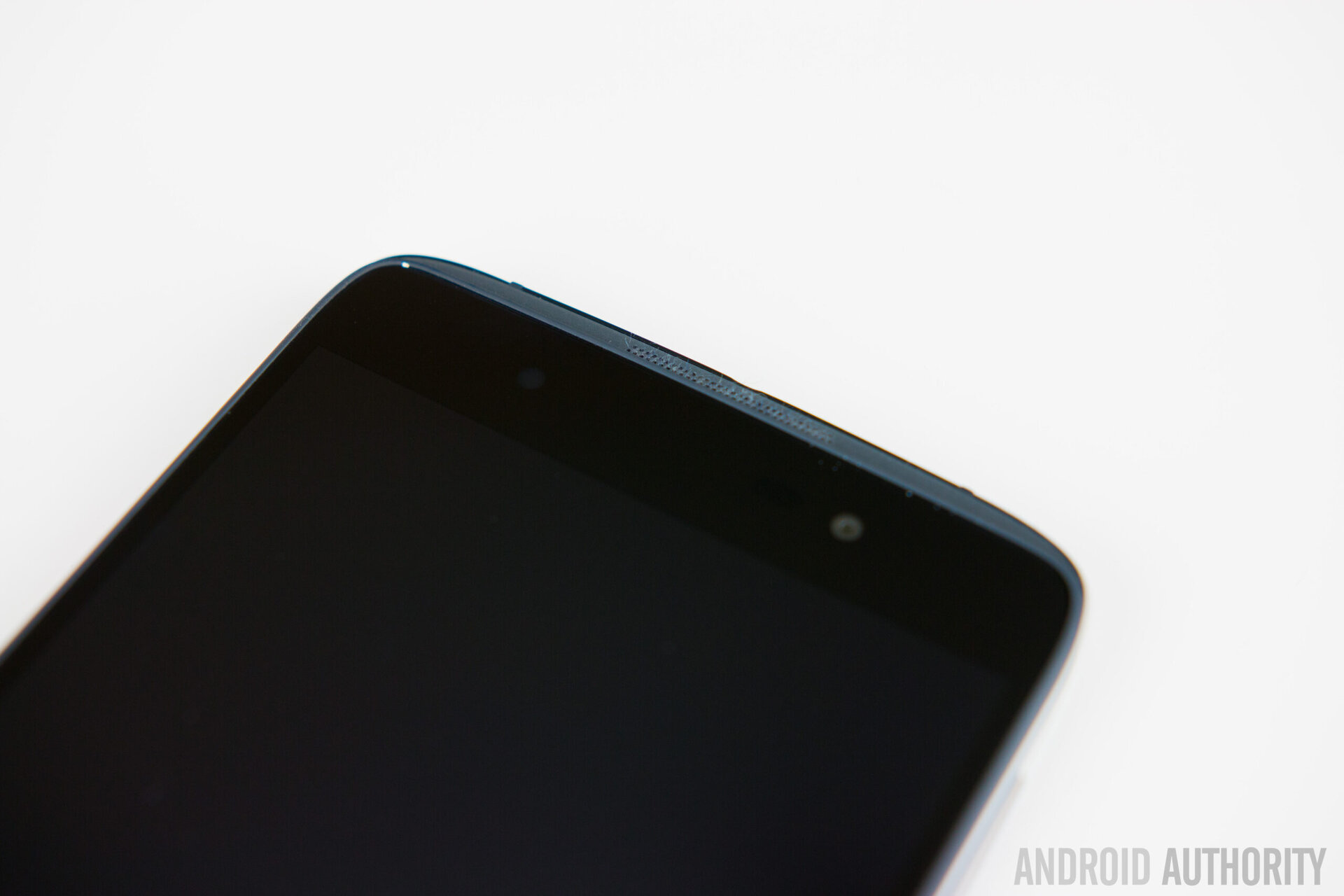
On the battery side, the DTEK50 comes with a 2,610 mAh unit, which is rather small when compared to other similar smartphones that are available. As such, battery life proves to be a weak point for this device. You can get a full day of battery life with light usage, but if you are someone who likes to play games, watch videos, and check social media often, the phone will unfortunately not last a day.
With similar usage, I needed to charge the device after just 7 or 8 hours. You do get Qualcomm QuickCharge 2.0 support, so it doesn’t take long to get back to a full charge, but if you are on the move often, picking up a battery pack may be a good idea.
Camera
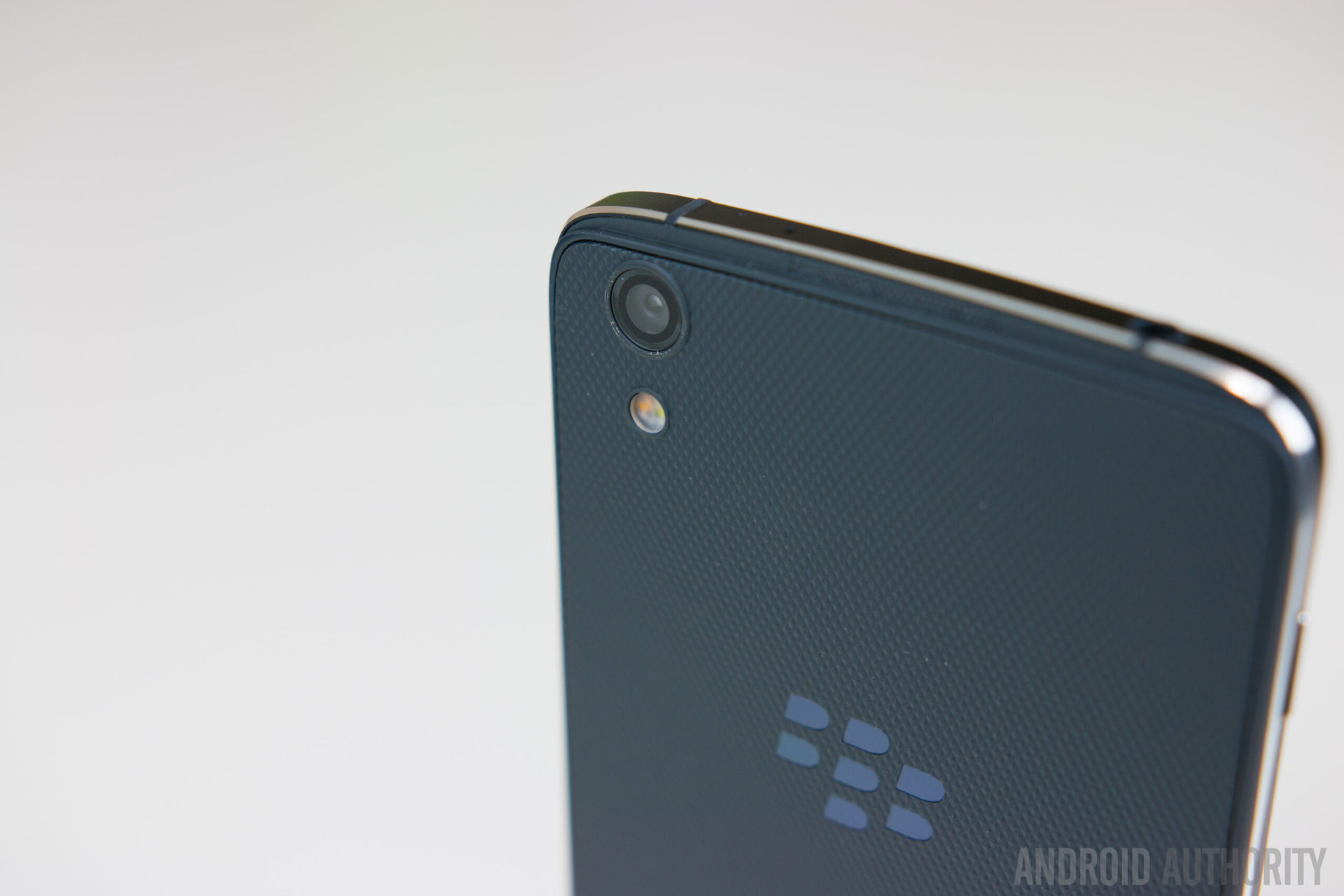
The BlackBerry DTEK50 comes with a 13 MP rear camera, with a f/2.0 aperture, phase detection auto focus, and a dual LED flash, along with an 8 MP front-facing shooter, with a f/2.2 aperture.
As far as the camera app is concerned, it is quite simplistic, with not a lot of bells and whistles. You don’t get any extra shooting modes beyond the standard video, photo, panorama, but it does have a bunch of live filters built in. There is also a HDR Auto mode, and a built-in manual mode for controlling the focus, white balance, shutter speed, ISO, and exposure.
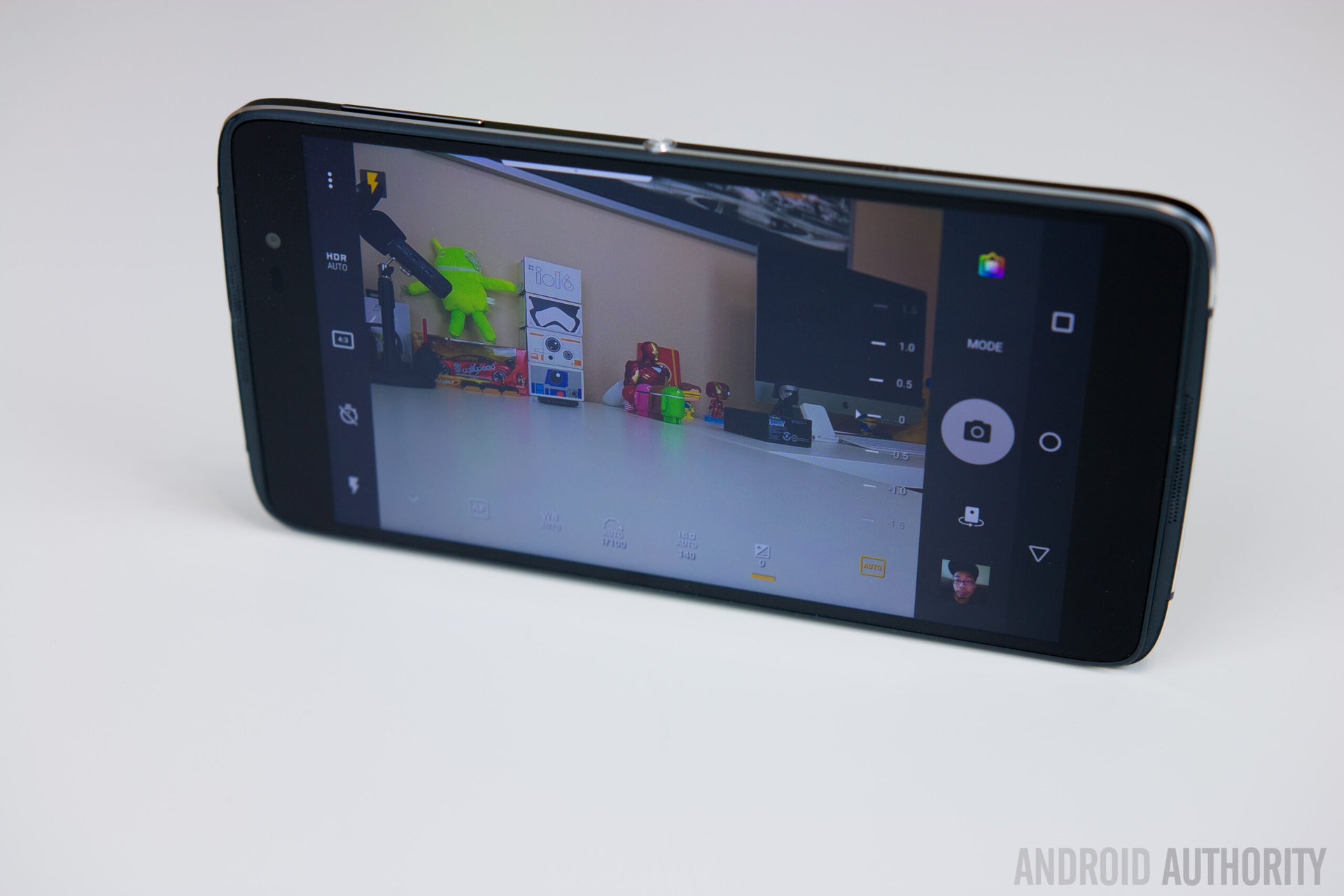
To get a great looking photo with this camera, the lighting conditions have to be perfect, but even then, there is a noticeable lack of sharpness and detail when zooming in. The color reproduction is good though, when shooting outdoors or in well-lit areas.
However, in low-light conditions is where the image quality really deteriorates. The camera constantly hunts for focus, making it very difficult to take a photo, and when you do take a shot, they’re usually very noisy with a lot of artifacts, and the images just look soft and muddy.
The front-facing 8 MP isn’t particularly noteworthy either. You can take some decent selfies with it, and the notification LED can also double as a front-facing flash to help you get slightly better results in low-light situations, but the results are still typically not that great.
Software
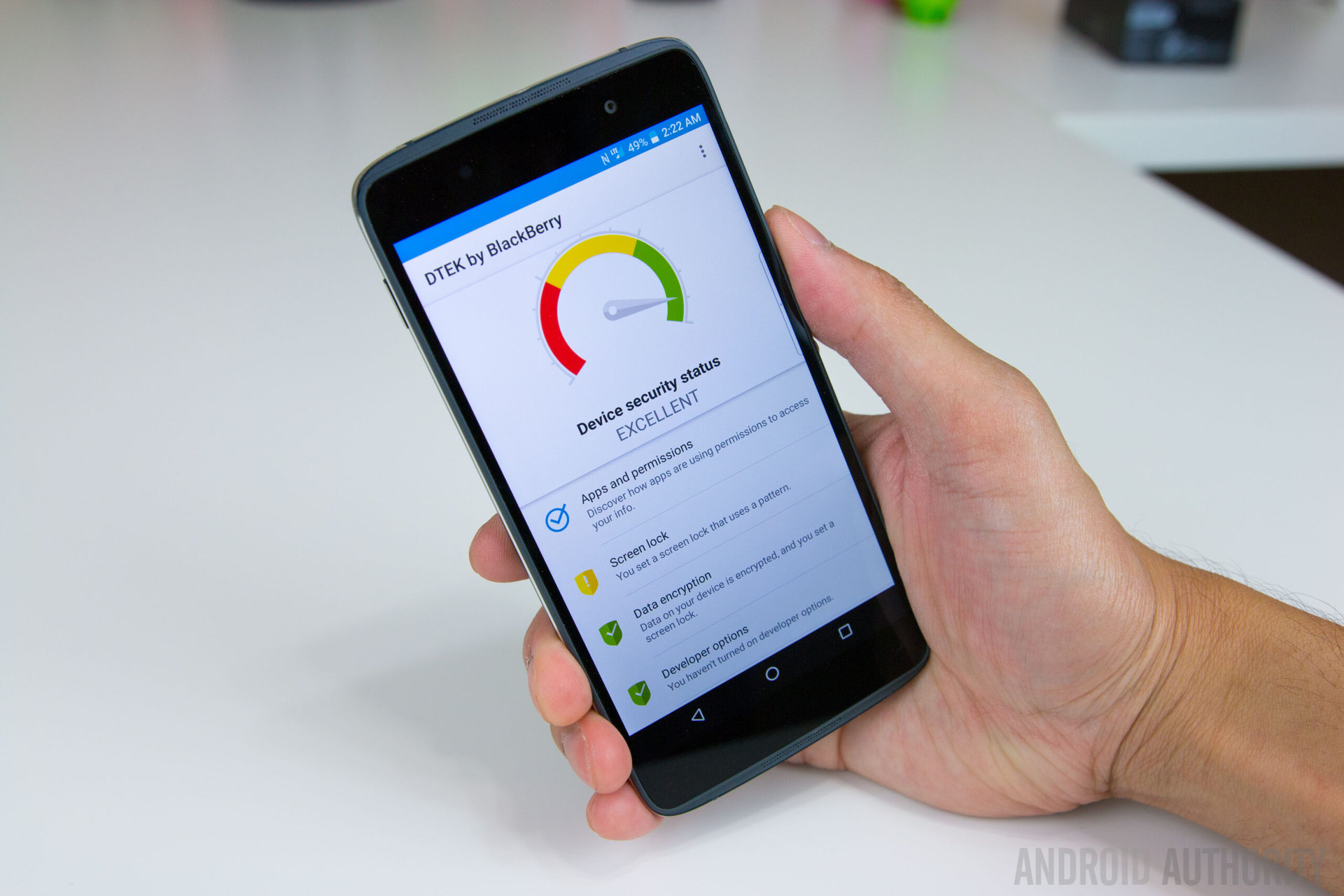
The big selling point of the DTEK50 isn’t the design, the camera, or the specifications. It’s all about the software, and the security that comes along with it. The majority of the security comes from the DTEK application, which is also what gives this phone its name. DTEK will show you the security status of the device, and this can change over time the more you use the phone. With DTEK, all your data is encrypted, and you can control the permissions of individual apps and what they’re allowed to access, so you never have to worry about apps having access to things that you don’t want it to.
There’s also a factory reset protection, so in the event that someone steals your phone and factory resets it, they still won’t be able to use the phone without knowing your Google account info. Whether it really is the most secure smartphone in the world is pretty tough to say, but BlackBerry is promising that they will be very quick to release security patch updates as soon as they are available.
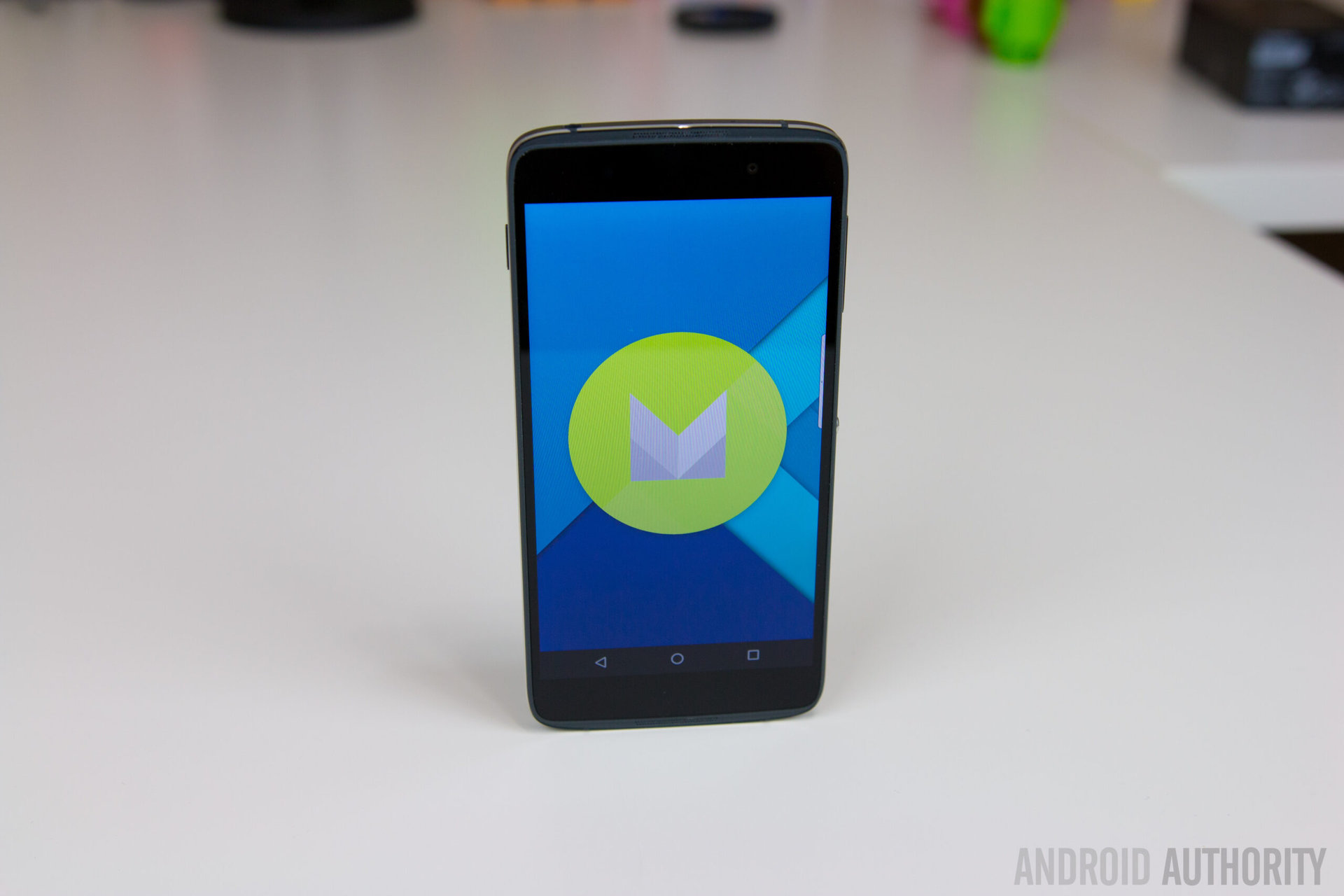
The rest of the software is a very stock-like Android 6.0 Marshmallow experience, with a lot of Blackberry’s software enhancements on top, many of which were seen with the Priv last year. It comes with BBM installed by default, which is something I personally don’t use, but could be ideal for those who still love communicating via BBM.
However, I do like a lot of the features from BlackBerry, and many of them are actually pretty useful. You have the productivity tab, which you can access by swiping from the right, to see your current calendar events, emails, tasks, and your most recent contacts.
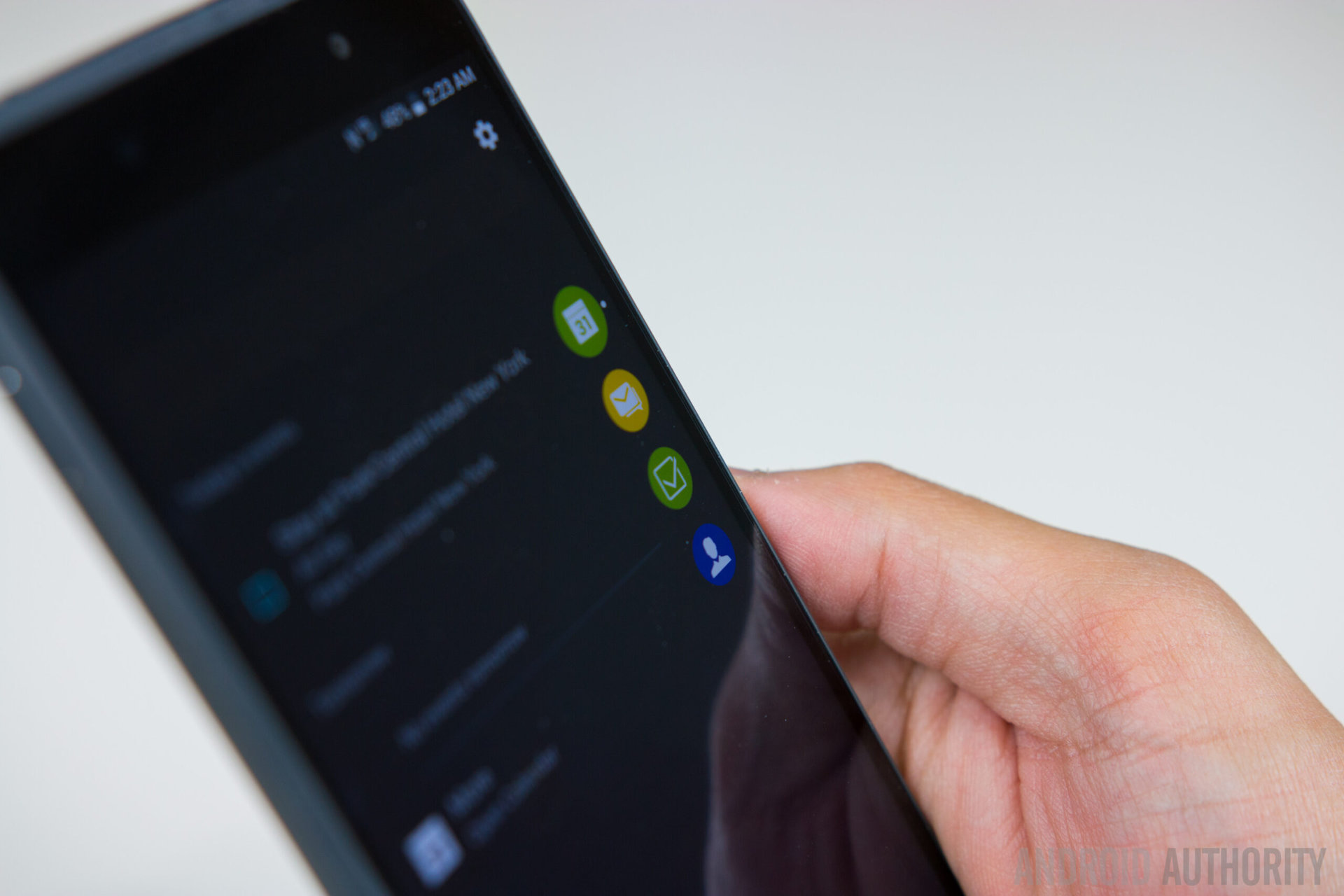
My favorite feature of the lot definitely has to be the BlackBerry Hub. If you aren’t familiar with it, the BlackBerry Hub is your one stop shop for virtually all your notifications. It aggregates your BBMs, text messages, emails, phone calls, and social media, all in one place, making them very easy to check. It does have some issues, such as Gmail not rendering properly through the Hub, but for the most part it does what it is suppose to do extremely well.
You can also swipe up from the bottom, similar to how you would access Google Now before, but here, you get access to three app shortcuts, which are set to BlackBerry Search, the dialer, and the Hub, by default. You can change them to whatever you want though.
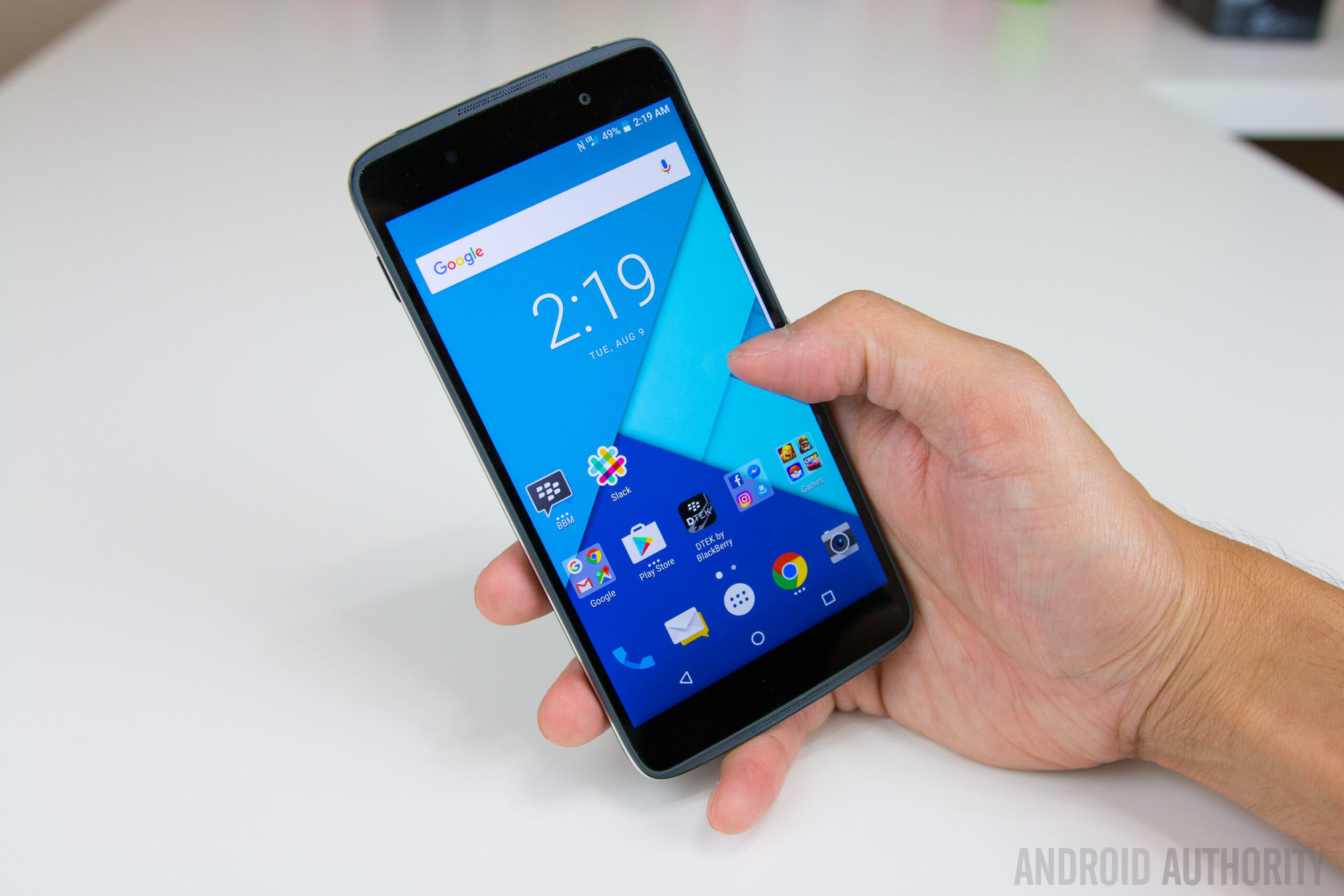
BlackBerry gives you a lot of room for tweaking and customization, and something that I really enjoy is the fact that you can use third party icon packs to customize the default launcher. If you’re a fan of widgets, the Pop Up widgets is another very useful feature. Basically, any app that you have that supports a widget will display 3 dots beneath it, and all you have to do is swipe up to open the widget. It’s a really elegant solution to using widgets without having them take up any space on your home screens.
Of course, you can’t talk about a BlackBerry without talking about keyboards. The DTEK50 is an all touch screen device, so it obviously doesn’t have a physical keyboard, but it does come with BlackBerry’s own software keyboard. It’s accurate and easy to type on, and I like that the predictive text allows you to swipe up on a letter to quickly complete a word.
BlackBerry’s software isn’t perfect, and it does have some minor quirks, like the way the app drawer looks when the apps are sorted alphabetically. They’re not only sorted alphabetically, but it’s also sectioned out by the letter, and visually just doesn’t look very appealing. Overall though, I’m a fan of the software package, and their features add a lot of value, without making the experience feel boated, or taking away from the stock Android experience.
Specifications
| Display | 5.2-inch IPS LCD display 1080p, 424 ppi |
|---|---|
Processor | 1.5 GHz octa-core Qualcomm Snapdragon 617 Adreno 405 GPU |
RAM | 3 GB |
Storage | 16 GB expandable via microSD card up to 256 GB |
Camera | 13 MP rear camera, f/2.0 aperture, dual LED flash 8 MP front-facing camera |
Connectivity | Wi-Fi 802.11 a/b/g/n/ac Bluetooth 4.2 NFC GPS + GLONASS microUSB 2.0 |
Battery | 2,610 mAh |
Software | Android 6.0 Marshmallow |
Dimensions | 147 x 72.5 x 7.4 mm 135 grams |
Gallery
Pricing and final thoughts
The BlackBerry DTEK50 will be priced at $300 in the US, and will be available unlocked, and can be used with AT&T and T-Mobile.
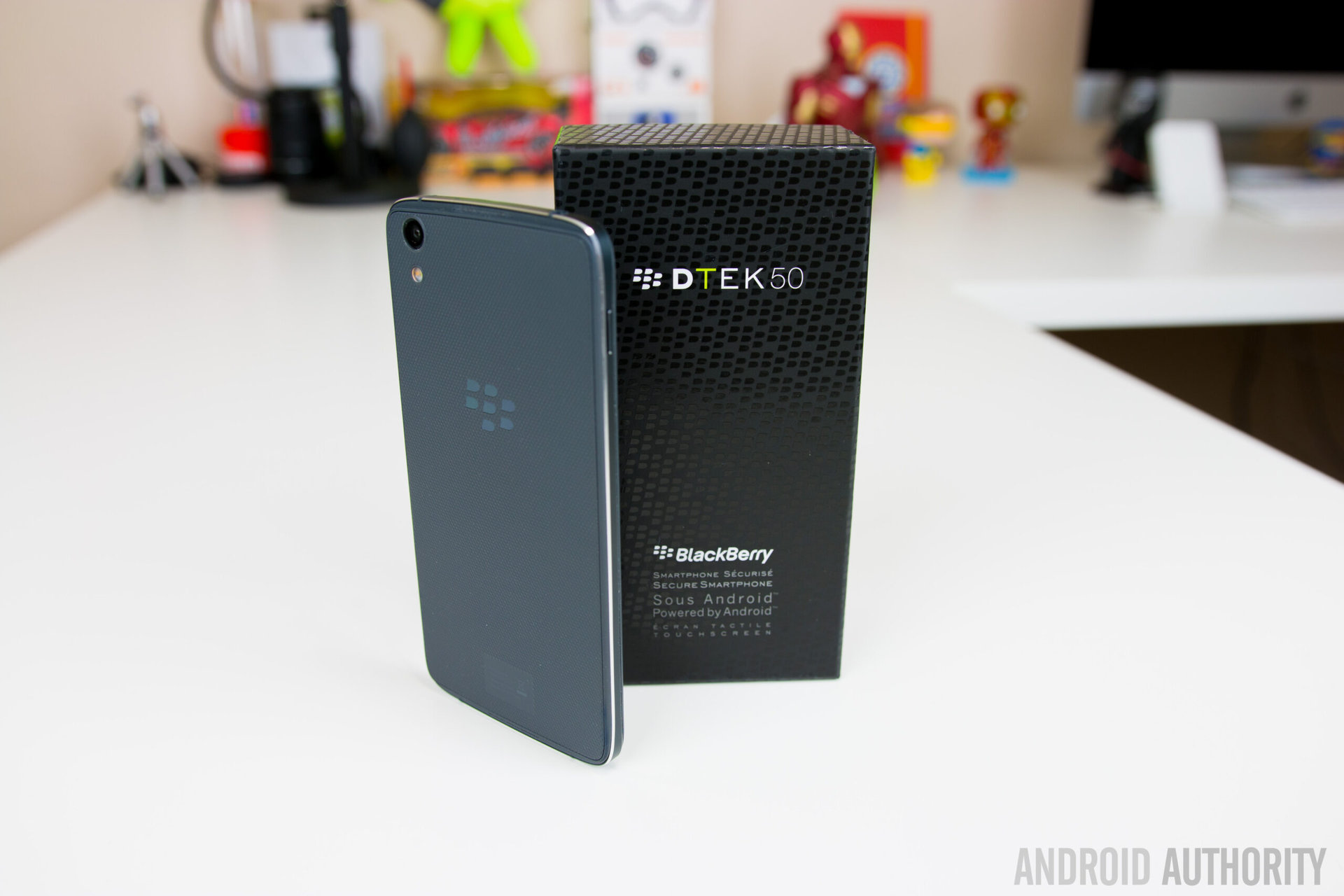
There you have it for this in-depth look at the BlackBerry DTEK50! $300 is relatively cheap, especially if you want a smartphone that prioritizes security. If that is the case, you’re probably not going to find a better deal.
However, as far as phones go, there are a few better options out there that offer a lot more for similar prices, like the OnePlus 3, the Moto G4 Plus, and the Axon 7. If you do store a lot of sensitive information on your phone, the DTEK50’s top notch security will be well worth the investment, but if there is one major flaw, it is that BlackBerry didn’t make it a better phone all around.
What do you think about the BlackBerry DTEK50 and would you buy one? Is smartphone security as important to you as say, things like the camera, display or battery? Let us know your views in the comments below!